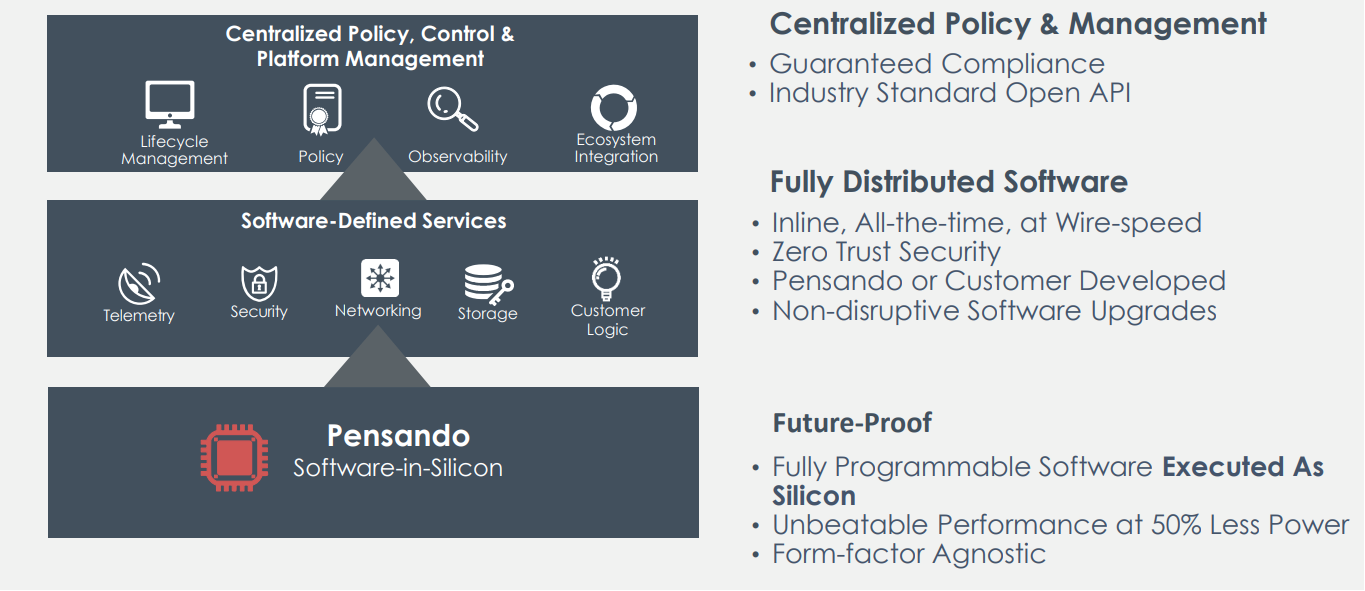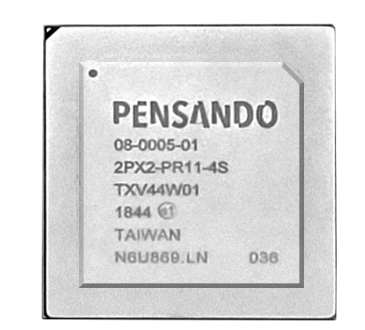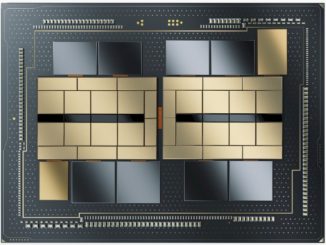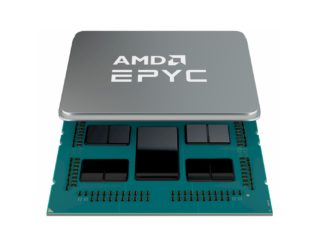
Lisa Su has had the datacenter in her sights since taking over as president and chief executive officer of AMD in 2014, charting a course that would allow the processor maker to once again become a factor in the global server market after a decade or so in the wilderness following its brief but high-profile breakthrough with its first Opteron processor in 2003.
Key to the journey has been the Epyc X86 server processors, which launched in 2017 with “Naples” and based on the vendor’s built-from-scratch Zen microarchitecture. AMD served it to a rapidly changing enterprise compute market that included the rise of hyperscaler cloud providers, proliferation of data, a greater focus on data movement and the emergence of artificial intelligence and machine learning.
The vendor also offers its Instinct GPUs for the datacenter and in February finally closed its long-awaited nearly $49 billion acquisition of Xilinx, bringing aboard the company’s FPGA programmable logic and associated DSP engines, AI accelerators, memory controllers and the like as well as its family of SmartNICs, designed to offload networking and storage functions to enable CPUs to more efficiently do their compute work.
Now AMD is about to take the final step to complete is this expanding family of datacenter offerings, announcing Monday plans to buy Pensando and its programmable packet processor and distributed services platform for about $1.9 billion. The move will give the chip maker a platform that is being used by cloud players like Microsoft Azure, IBM Cloud and Oracle Cloud, vendors like Hewlett Packard Enterprises’ Aruba Networks Business and larger enterprises like Goldman Sachs.
Pensando also is working with VMware to combine its platform with the virtualization vendor’s “Project Monterey,” an initiative announced in 2020 to deliver a consistent platform for distributed computing environments running AI and machine learning workloads that leverage data processing units (DPUs) to offload hypervisor and other functions from CPUs to beefier SmartNICs that become center of gravity between compute and networking. Specifically, the compute engines DPUs can be used to offload networking (sometimes with literal packet processors) and storage workloads from the CPU while the software stack in the platform offers software-defined networking, storage and security services along with policy and management functions.
In Pensando’s case, its SoC includes 16 Arm cores and a P4 MPU that delivers Pensando’s services at 400Gb/sec. It is installed in any standard server with the company’s Distributed Services Card, providing the services at the server edge and network visibility via its hardware bi-directional flow streaming and traffic monitoring. The Policy and Services Manager delivers lifecycle management, security and visibility throughout the software stack, as well as integration to analytics, orchestration and management tools through APIs.
“With Pensando, we’re augmenting those other three pillars with a unique packet-processing and distributed-services platform that allows us to accelerate not just networking but security to accelerate storage applications, to add new capabilities to trace activity in the datacenter for threat detection and performance optimization and to do it all simultaneously,” Forrest Norrod, senior vice president and general manager of AMD’s Datacenter Solutions Group, tells The Next Platform. “We think we’re completing the puzzle. We’ve got a complete complement now of those CPU-, GPU-, FPGA-based acceleration and adaptable SoCs and then finally, this piece that helps us knit it all together in a secure, highly performant fashion that we think is going to be core to continuing to allow our customers to scale, to do it securely and to do it efficiently by offloading a lot of infrastructure [tasks] that otherwise would be consuming CPU or other cycles.”
The deal is expected to close in the second quarter, after which Pensando co-founder and CEO Prem Jain and the rest of company will be folded into Norrod’s group.
Pensando was founded in 2017 by a group of longtime Cisco Systems executives who made their names as part of a group of highly influential engineers that helped drive the networking giant’s “spin-in” strategy, with Cisco being the only investor in startups they started and then buying the company at a hefty price once the product was product was built, folding it into Cisco’s portfolio. The group, which was nicknamed MPLS as an acronym for their first names and built such companies as Insieme Networks and Nuova Systems, also included Soni Jiandani, who is co-founder and chief business at Pensando.
Jain, Jiandani, Mario Mazzola, and Luca Cafiero all left Cisco in 2016 after Chuck Robbins took over for long-time CEO John Chambers, who has since become CEO of JC2 Ventures and chairman of Pensando. The startup has raised $313 million since 2017, including $35 million in Series C funding last year. It has about 330 employees, with more than 200 in India. About two-thirds of Pensando workers are focused on software, according to Jiandani.
Jiandani tells The Next Platform that from the start Pensando took a system approach to building its product.
“It is how you bring together highly programmable [silicon] and make everything software-defined,” she says. “We’ve built this system-on-a-chip, which is a real system that can run our software stack, it can run our customers’ logic and the two can co-reside with each other. It’s form-factor agnostic, so if you put it in a server, we are eight to 13 times the performance of Amazon’s Nitro[the underlying platform for its EC2 instances]. The irony of it is Amazon only uses it for running their own cloud and that’s why we say we’re democratizing the cloud. Whether you are a high-end financial services organization like Goldman Sachs or you happen to be Microsoft Azure, we want to have the ability to deliver to you an eight- to 13X step in performance and scale of what only a hyperscaler and the leader in this space like AWS can afford.”
Last fall, Pensando used that form factor-agnostic capability to introduce with Aruba the CX 10000, a top-of-rack networking switch that runs Aruba’s AOS-CX operating system and its Aruba Fabric Composer for provisioning CX switches. The switch is being shipped to thousands of Aruba customers, Jiandani says.
“That platform is essentially offering the enterprise the same attributes that a cloud customer like a Microsoft and Oracle Cloud is deploying with Pensando at scale and we are bringing in 100X the scale in that smart switch, 10X the performance, and one-third the total cost of ownership,” she says.
The programmability and SmartNIC capabilities of Pensando’s platform strike a similar chord to what Xilinx offers. Norrod notes Xilinx SmartCards, saying they’ve been adopted by some of AMD’s larger enterprise customer. However, he says, the approaches taken by each company are different.
“Both solutions have a set of hard-coded accelerators for very common features,” he says. “The difference is, for anything else, with Pensando, we’ve got a programmable, highly customizable P4 packet processor that can do many, many things and can be easily programmed in software to do those many things. Xilinx has very high performance and, in Xilinx, you can do a lot of that and you can actually do it at even higher performance, but you have to program the FPGA. The way that we look at this is, for the ultimate in performance for a narrow set of functions, we can address that with the Xilinx technology and offer the pinnacle of performance for certain classes of workloads and certain customers.”
It also comes at a time when Intel – with its infrastructure processing unit (IPU) and SmartNICs – and Nvidia (Bluefield DPUs and DPU-based SmartNics) both are expanding their portfolios. What they don’t have is the system software that Pensando delivers or the broader ecosystem, Jiandani says. Along with Aruba, Hewlett Packard Enterprise, and VMware and the cloud providers, the vendor also works with Splunk, ServiceNow, Guardicore and Elasticity to help make Pensando foundational to enterprises’ and cloud providers’ zero-trust network architecture.
“Whether I’m integrating inside Oracle’s cloud environment and Microsoft’s cloud environment or I’m going into a Goldman-Sachs’ environment or whether I’m in a smart-switch topology fitting into an Aruba customer’s environment, with these ecosystem partners and a deep capability to have an API-driven integration pointed to Splunk and others, we fit into customers’ existing operational models in enterprise and cloud,” she says.
With Pensando, AMD will deliver a high-performance collection of silicon and software that can support a range of services simultaneously without the enterprise having to do any FPGA-like programming.
“It’s more accessible,” Norrod says. “Expect us over time to combine the elements. I see them as very complementary right now, but I also see them as very synergistic over time, so stay tuned for a couple of years. You should imagine we’re going to do some very interesting products putting some of this stuff together.”
“A customer can either take the complete solution, they can substitute their own piece or part of software-defined networking function if they have different needs,” he says. “They can mix and match and they can do it running that code on the Arm core side of the part or on the programable P4 packet engine. It’s a very unique set of customization capabilities that Pensando offers our customers. You are going to see a richer roadmap over time. We’re doubling and tripling down in networking and data processing with the assets from both Xilinx as well as Pensando.”







AMD’s $1.9 billion bid for Pensando is a big move for the company. They are trying to get into the DPU market, which is a growing area.